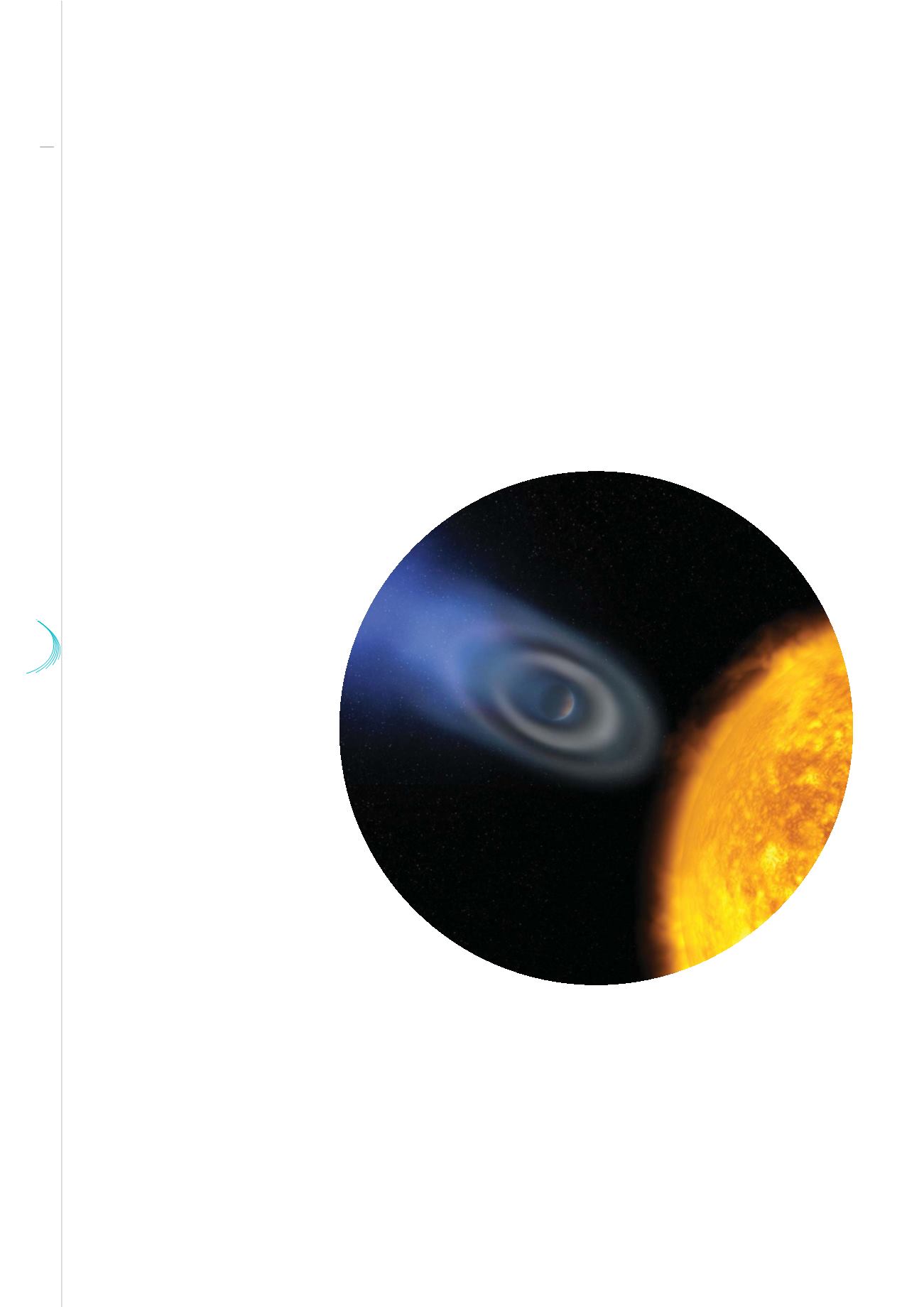

37 38
60
La Lettre
©ESA, Alfred Vidal-Madjar (Institut d'Astrophysique
de Paris, CNRS, France) and NASA
Osiris, a giant planet near the star HD209458, in the
constellation Pegasus. This exoplanet, which orbitS its star
in 3.5 days, have an extended envelope of atomic hydrogen
probably due to planetary evaporation (artist view).
reproduce them in laboratory conditions, because our computational resources are not powerful enough
to simulate them and because only scarce direct information is available on the physical, dynamic and
chemical conditions in which the solar system formed.
Exoplanets
Now that the sun had become one star among billion others, it was legitimate to speculate on the existence
of other systems formed according to the same laws. Whether other worlds existed, however, remained
an open question until the end of the 20
th
Century, as adequate observation tools were lacking. The
announcement, in 1963, that a planet around the star of Barnard had been discovered, although disproved
ten years later, launched the hunt for extrasolar planets. Such a hunt was based at the time on amethodology
of indirect detection, intended to identify small perturbations of the stars induced by the presence of
one planet or more orbiting around them. However, no planet was
found before the 1990s. How come? Astronomers
had started by searching for planets
analogous to Jupiter, the biggest
planet of the solar system. But
such planets were too difficult
to detect with the resources
of the time. The first
exoplanets discovered
were as a matter of
fact quite different
from the expected
planets. The first one
was a planet revolving
around a pulsar, which
is the remnant of a stellar
explosion; as for the second
planet, its mass was indeed
comparable to that of Jupiter but
it was orbiting one hundred times
closer to its star than Jupiter to the sun.
The theories of the time did not expect the
existence of such “Hot Jupiters” (“hot” because
of their proximity to their stars), which however proved
quite common thereafter. The first images of exoplanets were finally
obtained in the 2000s through sophisticated technological developments.
Twenty years after those first discoveries, more than 3 000 exoplanets have already been identified; many


















